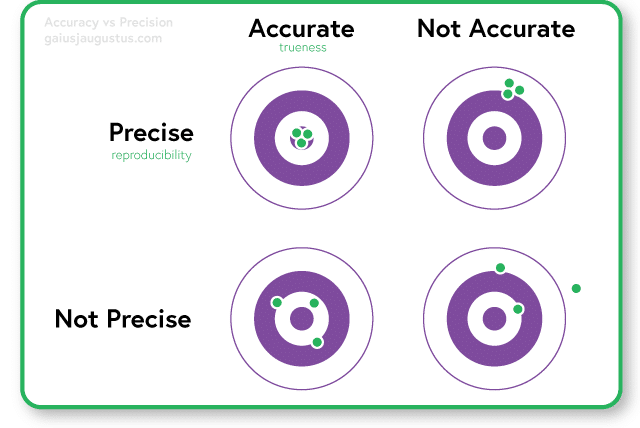4 tips for breaking down complex topics
So, you’ve got a complex topic to explain and don’t know where to start? Or perhaps you’re already off to a great start, but could use some guidance. This post is all about how to communicate complex topics in simple ways.
I’m a believer that showing can go much further than telling. What does that mean? For this particular conversation, it means that a visual really can replace 1000 words of explanation. But this blog post isn’t about the visuals. It’s about the planning behind explaining any complex topic. There’s a lot of thought involved in explaining topics that aren’t straightforward, and it can be difficult for experts to remember how challenging certain concepts were.
There are plenty of techniques to help you simplify, such as:
- Using metaphors and analogies
- Reducing jargon
But where do you start with planning?
1) Identify your audience
It seems clear enough, doesn’t it? But perhaps a more important question is how much does your audience know?
If your audience is already aware of some of the jargon in your field, you can present the information in a more sophisticated way. However, if your audience is completely naive to your topic, it’s important to realize that even things that seem simple to you may be complex.
For example, take this sentence:
DNA replicates itself prior to entering mitosis.
This is a 5-word sentence, how bad could it be?
Well, for someone with a high school education and who has done well in biology, they hopefully remember that:
But imagine someone who doesn’t know one or more of these things. Knowing your audience before you start planning your communication is key. It can help you set the tone, the reading level, and the engagement necessary for a communication.
2) Identify key concepts
This may seem silly, but have you thought about all the parts necessary to understand your topic? Once you know who your audience is, breaking your topic down into the simplest parts necessary will give you a better idea of how to tell your story.
Recently, I was trying to describe a restriction enzyme digest, an experiment where you cut DNA at a site with a specific sequence. I realized that there were a lot of questions that I didn’t have time to cover on the platform I was using.
For example, I didn’t have space or time to cover:
I could have fit it all had I decided to use more jargon, but I decided not to. Instead, I broke down the visual into (1) the research question, (2) the experimental design, and (3) the expected results. I used color, graphics, and animation to help solidify the concept.
The point here is that you can’t always explain every aspect of a topic. Depending on the audience, the time or space available, the platform, etc, you may have to choose which part of the concept is the most important.
One way to do this is to come up with one core question you want to answer. For my restriction enzyme digest example, I wanted people to be able to answer “How can we tell which DNA base is in a sequence?” I had to explain SNPs briefly and restriction enzymes, but those things I didn’t have space for above? They weren’t really necessary to answer this question. They’re important for the experiment as a whole, but not for helping people understand why the experiment answers the question.
Really want to fit it all in? Consider followup lessons/lectures/presentations that take the foundational knowledge and build upon it.
Explain what’s most important, leave out extraneous information.
3) Plan to present concepts in small batches instead of all at once
Let’s go back to our earlier example sentence:
DNA replicates itself prior to entering mitosis.
Here, we’ve brought up both DNA replication and mitosis in one sentence. You’ve broken your topic down into small pieces with step 2, now is the time to decide the order that those subtopics should go in. How do you present them one at a time, while allowing them to build on themselves?
Let’s consider that sentence above. There are many ways to break this down, depending on the audience, but here’s just one.
- Cells divide
- Cells divide using a process known as the cell cycle
- The cell cycle has 4 main parts: Growth 1, Synthesis, Growth 2, and Mitosis.
- Mitosis is when the cell actually divides into 2 cells.
- In order to divide, it has to become make enough of everything inside to make 2 complete cells.
- Synthesis phase is important for doubling the amount of DNA.
- Making a copy of all the genes inside the cell has to happen before the cell can divide during mitosis.
Note how each point references the last. Tying these ideas together reduces the strain of having to remember lots of different things. Instead of relying on the audience to connect the dots, you are connecting dots as you place them on the paper.
4) Consistency through repetition
When I was an undergraduate, I had a lot of trouble remembering accuracy vs precision. I was shown images like the following several times, but never could remember which was which.

And then I took Quantitative Analytical Chemistry. This professor had an interesting way of teaching. Every time he said “precision”, he would follow it with “reproducibility”. He did this for the first several weeks as he was solidifying these topics. After this, I never had trouble remembering the difference again.
When I give talks that involve jargon….and let’s be honest, that’s EVERY science talk….I do this a lot. I gauge my audience, then identify the one or two terms or concepts that I need to drill into my audience’s head. Then, I try to come up with a quick way of explaining them, just a few words, and I repeat that a few times throughout my talk.
When preparing your presentation, take a moment to identify any word you think your audience won’t know. Are some of these words things you could leave out (i.e., say only a simplified version of)? How can you use simplified language and repetition to solidify the most important concepts?
Sometimes, as experts in our fields, we forget how difficult it was to understand some concepts when we were just starting out. Get fresh eyes on your presentation, someone who is closer to your audience, and see what insights they can give you.
In the end, often it is the excitement of a presenter that generates a buzz around a topic. The above are just a few ideas that could help improve any communication about complex topics.
Need a guide to help you with your next presentation? Download the worksheet that walks you through each of these steps!
What other tips can help with this? Do you have a trick or two up your sleeve that you care to share? Let me know in the comments.
And don’t miss a post! Subscribe to my email list to get the latest updates before anyone else.






